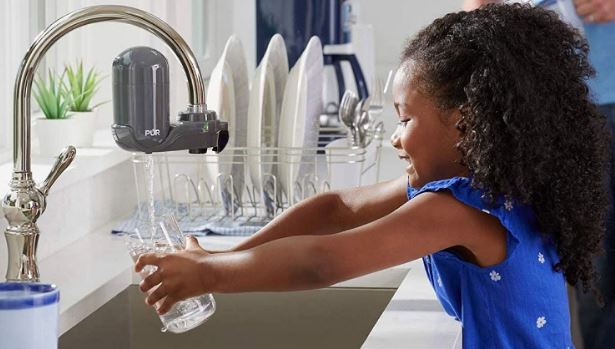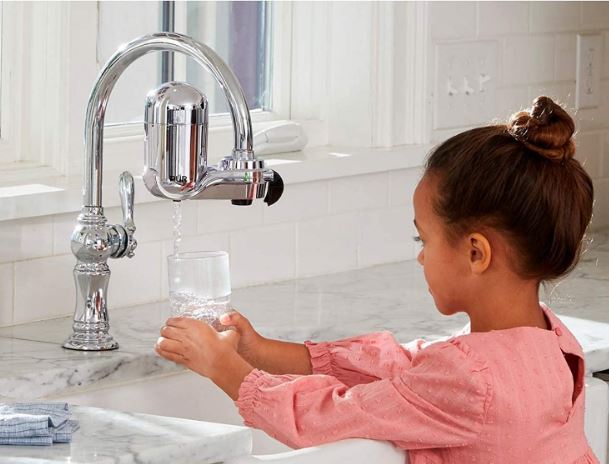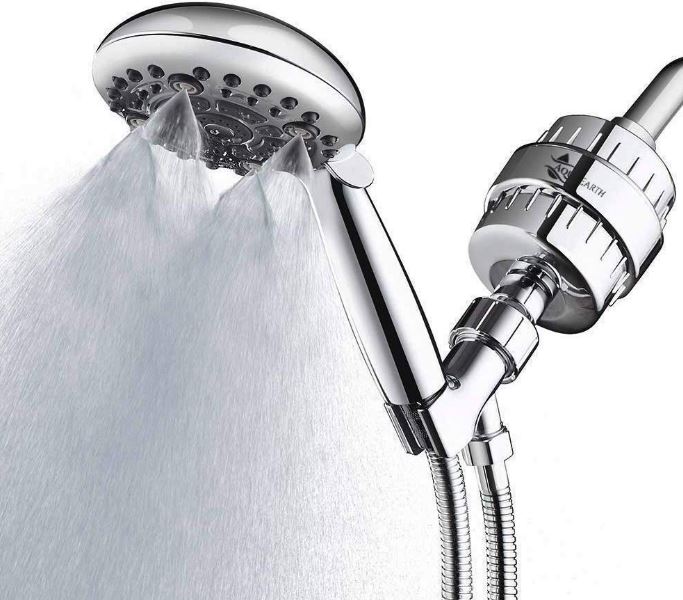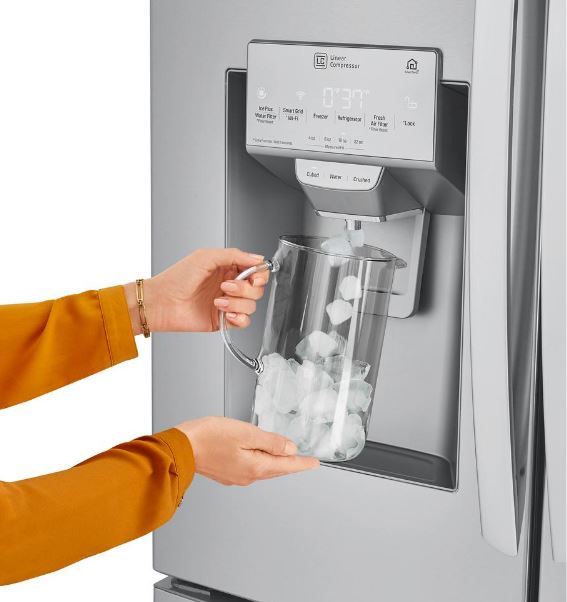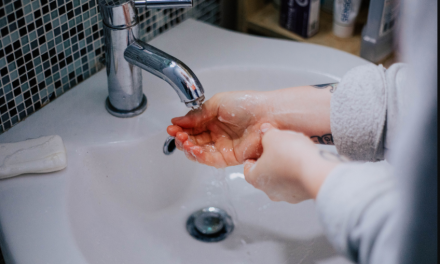Once you know which contaminants are affecting your water and which filters you need to use against them, it’s time to decide on a water filtration system. There are several kinds, from small systems that sit on your counter, to midsized solutions that fit underneath the sink, and larger solutions that treat all water than enters the home.
Regardless of which filtration system you choose, all offer some advantage, particularly to flavor, odor, and clarity. Ensure your tap water is safe and tasty, and you’re much more likely to drink it and avoid plastic bottles, 90% of which are never recycled!
In this article, we’ll discuss the uses and costs of filtration systems of various sizes.
Types of water filtration systems
When you’re deciding on a type of water filtration system, there are really three factors to consider: the types of contaminants you’re trying to remove, the types of filters you need to remove those contaminants, and the size and cost of the system that will help you do that.
Small filtration systems
Smaller filtration systems are common in the home and office. They’re made with easy, quick use in mind and usually focus more on contaminants that affect flavor, like chlorine byproducts. Most of these systems use single filter cartridges to save space.
The single filters in smaller systems also often make use of only a single filtering material, usually granular activated carbon (GAC) or carbon block. A few feature multi-stage filtering by way of a layered filter that makes use of different filtering materials. In some cases this is better than one type of filtering material, but what it filters still won’t be as extensive as what larger filtration systems can accomplish with their multiple, full-size filter cartridges.
Water filter pitchers
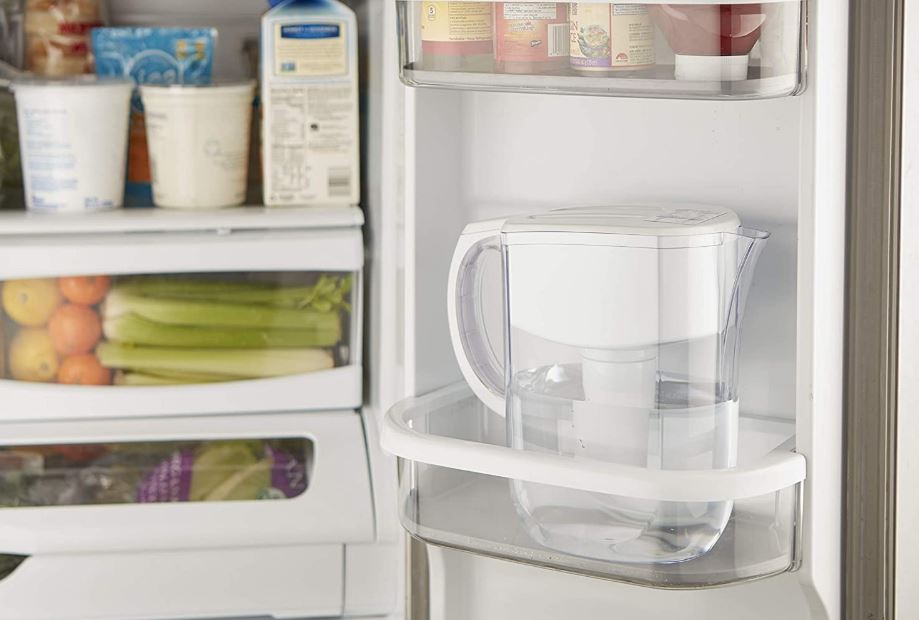
See Brita’s 10-cup Standard Everyday water filter pitcher, which uses a carbon filter and an ion exchange filter.
By far the most common of household filters, the water filter pitcher is cheap to buy, easy to use, and easy and cheap to maintain. These are a great option if all you’re looking to do is improve the flavor of your water, but they’re not going to be great at filtering out contaminants that might affect safety—despite some manufacturers’ claims.
Size: 10-cup (80 fl oz) pitchers are the most common size, but smaller and larger models are relatively easy to find.
Filters used: Typically an activated carbon-based filter, an ion exchange filter, and nothing else, but some models may contain a filter that has layers of different filtering materials.
Price range: $15-$70 for the bestselling water filter pitchers on Amazon
Faucet-mounted water filtration systems
Don’t like filling a pitcher and waiting for the water to filter? Faucet-mounted water filtration systems aim to make water filtration a more natural process, but are they actually good for filtering water?
These systems are more likely to use granulated activated carbon (GAC) than carbon block filters, precisely so they can move water through the faucet faster. This means they’re relatively weak filtration systems, though manufacturers will sometimes make big (and vague) claims about heavy metal removal.
While faucet-mounted systems may seem heavier duty than filter pitchers, they probably aren’t. Use these for quickly improving flavor, but don’t expect too much.
Size: Compact. Fits right on the faucet. Beware, though, they make your faucet head single-purpose, meaning you don’t want to use them with pull-down or pull-out faucets.
Filters used: Typically an activated carbon-based filter, an ion exchange filter, and nothing else.
Price range: $15-$40 for the bestselling faucet mounted water filters on Amazon
Shower filters
You probably aren’t drinking a lot of water in the shower, but your eyes, nose, and mouth definitely come into contact with it! If your water is particularly contaminated, you should consider a whole house solution to purification because shower filters are not that great at filtering out contaminants, despite some manufacturers’ big claims.
That said, shower filters make a lot of sense if all you’re looking to do is remove chlorine byproducts and soften the water, which may be good for some hair types.
Size: Compact. Fits between the faucet and showerhead.
Filters used: Nothing fancy, despite big claims. Layered materials, like simple mesh filters, beads, and activated carbon granules. Most likely to soften water and remove bad odors from chlorine.
Price range: $25-$40 for bestselling shower filters. Replacement filters tend to cost around $12-$15.
Midsized filtration systems
As you may have noticed from reading above, small filtration systems are mostly weak filtration systems. If you’re looking to do more than remove annoying sights, scents, and flavors from your water, you’re going to want a bigger filtration system.
Midsized filtration systems tend to take up some space in your kitchen, but they also tend to use the same or similar filters to those you can find in whole house filtration systems. While you should never assume a midsized filtration system is better than a small one by default, you will be able to find a wide variety of filters for these systems, from simple carbon and ion exchange filters to reverse osmosis membranes, UV light filters, sediment filters, and more.
Countertop water dispensers
Countertop water dispensers come in two common forms. The first is reminiscent of the traditional water cooler, and so holds more water than a filter pitcher. The only difference between these dispensers and old-school water coolers is that these water dispensers have a water filter included.
The water filter in these kinds of dispensers is typically the same kind you see in water filter pitchers and faucet-mounted water systems—that is, activated carbon-based, possibly in addition to a resin ion exchange filter.
The second kind of countertop water dispenser is shaped like a long tube, and with good reason: it houses a standard-sized long, tubular water filter cartridge. These dispensers hook directly into your tap.
While many of these dispensers use activated carbon-based filters, they’re much more likely to use carbon block filters for better (but also slower) filtration. It’s not uncommon to see them using multiple filter rods, too, offering nearly the same filtration quality seen in some under-sink filtration systems.

See APEX’s dual countertop water filter, which uses a carbon block filter, as well as a GAC filter with layered alkaline and calcite beads.
Bottom line? Not all countertop filtration systems work the same. Pay close attention to which filters they use, and remember multiple filters are likely better than individual filters.
Size: Not too big, but they take up counter space, sometimes in unsightly ways. Water dispensers that need to be hooked up to the tap may be especially frustrating as they eat up space around the sink.
Filters used: Water cooler-type dispensers will likely use granular activated carbon (GAC) and ion exchange filters, simply to improve flavor and provide some minor filtration. The cartridge-based dispensers can make use of a variety of filters, from carbon block to sediment, sand, UV light, and even reverse osmosis membrane filters.
Price range: $30-$140, depending on the number and types of filters used
Under-the-sink water filters
Under-sink water filtration systems can be as simple as a single filter cartridge, but really those don’t offer better filtering over many other single-cartridge filtration systems.
Mostly, if you’re going to get an under-sink filtration system, you want one that makes use of multiple filters. This is also where you’re most likely to see reverse osmosis systems, which offer some of the safest, cleanest water available. The downside is these need a tank to store pre-filtered water, which takes up even more space.
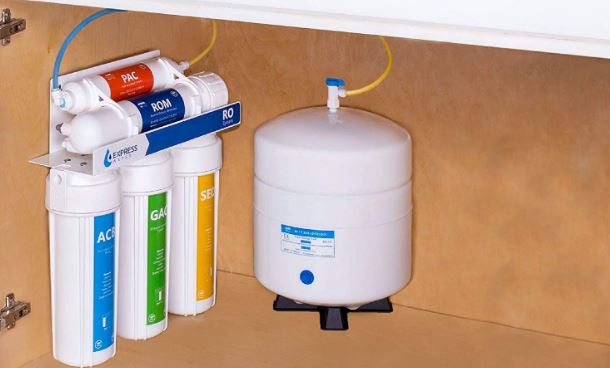
See Express Water’s reverse osmosis filtration system, which comes with a special faucet and makes use of several different kinds of filters.
When it comes to safe drinking water concerns, a good countertop dispenser (which has the benefit of being smaller) or an under-sink system (bigger) are great places to start that won’t have the space or cost requirements of a whole house system.
Size: Unless your kitchen is above a crawl space or basement where you can tuck the filtration system beneath the kitchen sink cabinetry, this sort of system is going to eat up some or even the majority of your under-sink space, especially if you choose a reverse osmosis system that has a large tank.
Filters used: Basically any and all are possible, so pay close attention to what filters systems use.
Price range: $100-$200+ for bestselling models with multiple filters, but most replacement filter cartridges are not too expensive.
Large filtration systems
The two large filtration systems you’ll encounter are refrigerator systems in large fridges intended for sizable kitchens and whole house systems. Fridge systems are nothing special; they offer basic point-of-use filtration, just like many of the other systems listed above. Whole house systems are point-of-entry systems, meaning all the water that enters your home is filtered clean.
Refrigerator water filtration systems
When it comes to fridge systems, you’ll most likely find them in double-door refrigerators, many of which also have in-the-door ice makers. With refrigerator water filtration systems, you get clean, cool water (and possibly ice) whenever you want it.
But how good are these filters, really? Like the filters seen in filter pitchers and faucet-mounted systems, refrigerator systems tend only to address flavor. Most use activated carbon-based filters, whether carbon block or GAC.
These systems seem hugely convenient at first, but a major downside to them is cleaning. While filter replacement usually isn’t difficult, ensuring the rest of the system remains clean can be tricky. Some users have reported mold and other grimy buildup in the water lines for these systems. As the water line tubing is hidden from the naked eye, it can be hard to know when you need to clean it, so periodically flushing the system with a bleach solution or vinegar is wise.
Size: Fridge filtration systems may be simple, but you’ll usually only find them in large or double-door fridges that require more space.
Filters used: Typically an activated carbon-based filter, an ion exchange filter, and nothing else.
Price range: The fridges these filtration systems come in are always more expensive than the fridges that don’t have them. And while the replacement filters aren’t too expensive, generally ranging from $30-$50 for bestsellers, don’t be surprised if maintenance or professional cleaning is not.
Whole house water filters
As far as consumer water filtration systems go, whole house systems can be some of the most comprehensive—and the most expensive. As point-of-entry systems, they really only work for people who own their home and have the access and rights to tamper with central water lines and features.
Like under-sink systems, many whole house systems use multiple filters, but it is possible to find single-filter systems. The question is, should you bother with those? If you only need a single filter to improve the taste of the water you’re consuming, opting for a whole house system is a little like taking a sledgehammer to a fly. You could just as easily use a countertop dispenser or maybe even some pitchers.
Whole house systems are best for water safety concerns. If you’re worried about chemical, biological, or radiological contaminants, you want to stop those from ever entering your house, including when you’re washing your hands or showering. But a whole house system that can stop these sorts of pollutants will definitely use multiple filters.
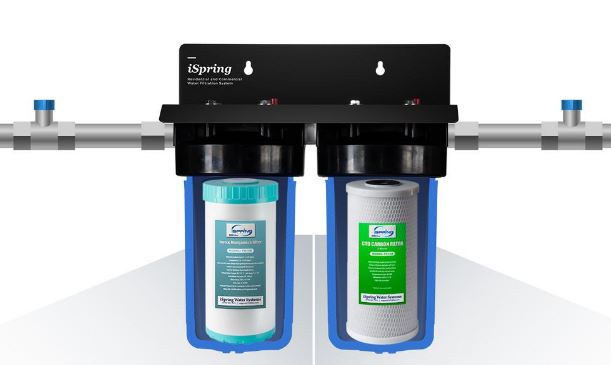
See iSpring’s iron and manganese reduction whole house water filtration system, which uses two filters.
The one thing whole house systems can’t do is protect you from bad pipes inside your home, so if you live in an older place that has questionable pipes take precautions and consider using a point-of-use filtration system that will further protect you from contamination.
Size: Varies, but they take up space. These systems are installed wherever water enters your house, usually in a garage or basement. Whichever whole house system you choose, pay close attention to the recommended house and/or household size when purchasing.
Filters used: Basically any and all are possible, so pay close attention to what filters systems use. Given most opting for a whole house filter are concerned about water safety, make sure to opt for filters that will protect from a wide range of possible pollutants.
Price range: Expensive, $400+, with some reaching well into the thousands, all before potential installation costs. Replacement filter costs will vary according to type of filters used.
Water filtration starter kit
There are a lot of water filtration systems and filters out there, so it’s easy to get overwhelmed! Here’s what we’d recommend, depending on your situation.
- If you just want to improve flavor, any basic system with a GAC filter will do. You’ll find these in many of the readily available, cheap water filter pitchers and faucet-mounted systems. For more stubborn flavors or odors, a carbon block filter will work better. Consider trying Brita’s Stream Rapids water filter pitcher.
- If you have contaminants that are unsafe for consumption but that you aren’t concerned about otherwise, consider a countertop dispenser or under-sink system. Just make sure you’re using the right filters for the contaminants you’re concerned about. You can’t beat reverse osmosis systems for safety.
- Own your home and don’t want to think too hard about which water you’re consuming versus which you’re using for other things? Opt for a whole house system. Just make sure to use the right filters, and remember, using a single filter in a whole house system is kind of a pointless expense. Go for multiple filters.
- Want to cover all the bases? Combine a whole house system with an under-sink reverse osmosis system. The filters of the whole house system can take out the largest pollutants, leaving the RO system to tackle the more microscopic particles, bacteria, viruses, etc.
Looking to DIY a whole house system?
This might be a job best left to professionals, but if you’re eager to attempt installing a whole house filtration system on your own, check out the video below!

